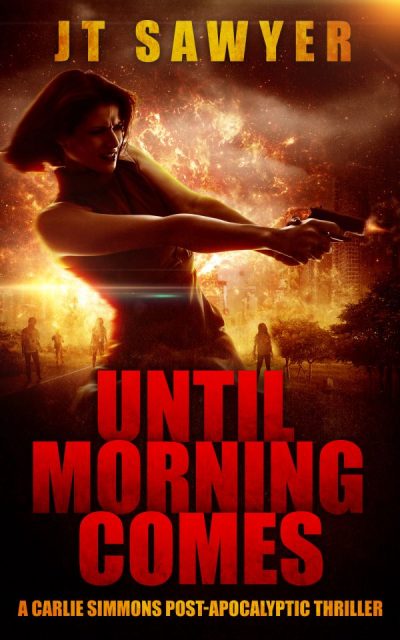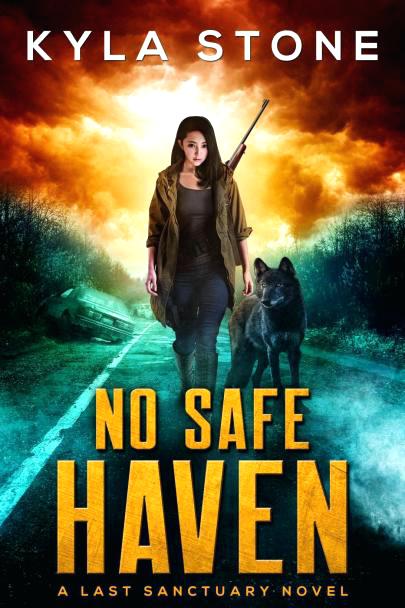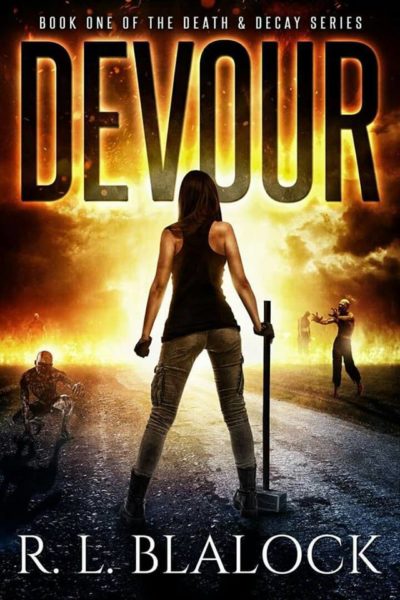★★★½
“The dead want women.”
 Though it may be difficult to believe such a thing, the original Japanese title for this franchise of low-budget efforts was even more politically incorrect: Rape Zombie. If ever a title change was understandable… I went into this, largely on the basis of the covers, and braced for something awful. On that basis, I was pleasantly impressed: yes, this remains staggeringly offensive. Yet it’s clearly made by people who are familiar with, and love, zombie films. There are signs of actual brains being present – and not the kind normally found in the genre, being chewed on by the shambling antagonists. Five films have been made: for now, I’m covering the first three, which are the only ones available with subtitles [because, y’know, understanding the dialogue is so important here…]
Though it may be difficult to believe such a thing, the original Japanese title for this franchise of low-budget efforts was even more politically incorrect: Rape Zombie. If ever a title change was understandable… I went into this, largely on the basis of the covers, and braced for something awful. On that basis, I was pleasantly impressed: yes, this remains staggeringly offensive. Yet it’s clearly made by people who are familiar with, and love, zombie films. There are signs of actual brains being present – and not the kind normally found in the genre, being chewed on by the shambling antagonists. Five films have been made: for now, I’m covering the first three, which are the only ones available with subtitles [because, y’know, understanding the dialogue is so important here…]
The concept is more or less the standard one: a global outbreak of some kind of illness, turning the victims into mindless creatures, who attack any non-infected person they encounter. The difference here is that the disease affects only men, and turns them into sex-crazed rapists, who will sexually assault every woman they meet. [This does an amusing job of explaining the traditional slow, shuffling gait of the zombie – here, it’s because their pants are around their ankles.] Making things worse, their semen kills their victims. Needless to say, 50% of the population is less than happy with this situation, setting up a literal war of the sexes, with the now female-led military distributing weapons to its civilian colleagues, for the battle against those pesky rape zombies.
The sex is actually the least interesting thing here – though I note, up until the very end of part 3, there is apparently no such thing as a gay zombie, who goes after other men. What is far more entertaining is the shotgun social satire at play, with the makers turning the heat up on just about everyone. Feminists. Male rights activists. The media. Politicians. Women. Men (for once, “toxic masculinity” is not hyperbole). Social networking. Idol culture. For instance, the rapidly appointed female Prime Minister proclaims, “We’re only in this situation because we allowed men to run wild with their perverted fantasies!” – then high-tails it to Hawaii, immediately she finds out North Korea has launched a nuke at Japan. When that missile flies across the skies of Tokyo, everyone just whips out their phones to take video of it.
 There are four heroines in the series: two pairs, who team up following some initial distrust. Momoko (Kobayashi) ends up in hospital as the crisis breaks, after slashing her wrists at work. There, she’s befriended by nurse Nozomi (Ozawa), and when all hell breaks loose, the pair flee the hospital, and end up taking refuge in a Shinto shrine. There, they meet Kanae (Asami) and Tomoe (Aikawa), a battered housewife and a schoolgirl who have also been trying to survive the carnage. The actresses portraying all four, incidentally, are best known for their adult work, though seem to acquit themselves credibly enough with the (admittedly, fairly limited) acting required here.
There are four heroines in the series: two pairs, who team up following some initial distrust. Momoko (Kobayashi) ends up in hospital as the crisis breaks, after slashing her wrists at work. There, she’s befriended by nurse Nozomi (Ozawa), and when all hell breaks loose, the pair flee the hospital, and end up taking refuge in a Shinto shrine. There, they meet Kanae (Asami) and Tomoe (Aikawa), a battered housewife and a schoolgirl who have also been trying to survive the carnage. The actresses portraying all four, incidentally, are best known for their adult work, though seem to acquit themselves credibly enough with the (admittedly, fairly limited) acting required here.
The main…ah, thrust of the trilogy is that men’s vulnerability to the virus (or whatever it is), is dependent on their pre-epidemic sexual appetite and activity. So, the jocks and pretty boys of society are pretty much toast: who inherit the earth are the otaku. That word is probably best translated as the Japanese version of nerds/fanboys, though more derogatory in connotation there, with a particular lack of social skills. When things settle down, they form the “Akiba Empire”, blaming women for the collapse of society. They hunt the remaining “3D women” with the air of domesticated zombies. On the other side are the “Amazons”, consisting of women soldiers from the Japanese Self-Defense Forces, and other survivors, including our four heroines and scientists working on a cure.
There are a couple of further wrinkles to this scenario. Momoe ended up pregnant by her husband, but is also raped by a zombie, though survives. The resulting child – born remarkably quickly – is apparently seen as some kind of saviour by the zombies and th Akiba Empitre, who won’t attack it or Momoe. She ends up apparently driven insane, a crypto-divine figure to the otaku, worshipped as an idol – in the J-pop sense at least, performing excruciatingly bad (deliberately, I sense) musical routines for them. Meanwhile, Tomoe – spoiler – dies at the end of part one, but comes back in two and three as an American combat robot, complete with laser eyes and lightning-producing fingers. She’s sent to Japan, both to gather data and carry out something called “Project Herod”. Which is what you would expect: part three ends in a cliff-hanger, with her and Momoe in a face-off.
 It would have been very easy for this to simply be a porn film with zombies in it, which I’m sure exist. As I hope the above makes clear, it isn’t. Horror fans will have fun spotting the riffs on other genre entries, such as the twist on Return of the Living Dead where a captive zombie is quizzed to its motivation: the answer here, naturally, being “More… pussy.” [As an aside, certain words are bleeped out on the Japanese soundtrack, which seems surprisingly prurient, given the nature of these films!] The second also introduces Shinji, a non-otaku seemingly unaffected by the epidemic, and his girlfriend, Maki; he becomes a key part of the scientific research, though it turns out his immunity isn’t quite what it seems. Despite the copious nudity, it all feels not dissimilar to George Romero’s Day of the Dead, located at the shadowy nexus of science and the military-industrial complex.
It would have been very easy for this to simply be a porn film with zombies in it, which I’m sure exist. As I hope the above makes clear, it isn’t. Horror fans will have fun spotting the riffs on other genre entries, such as the twist on Return of the Living Dead where a captive zombie is quizzed to its motivation: the answer here, naturally, being “More… pussy.” [As an aside, certain words are bleeped out on the Japanese soundtrack, which seems surprisingly prurient, given the nature of these films!] The second also introduces Shinji, a non-otaku seemingly unaffected by the epidemic, and his girlfriend, Maki; he becomes a key part of the scientific research, though it turns out his immunity isn’t quite what it seems. Despite the copious nudity, it all feels not dissimilar to George Romero’s Day of the Dead, located at the shadowy nexus of science and the military-industrial complex.
Overall, the trilogy manages to cram in more invention than entire later seasons of The Walking Dead. It’s especially impressive considering each film runs barely an hour – less if you discount the “Previously…” opener and closing credits. I’m not entirely convinced there needs to have been five of these films; with editing, you could likely condense them all into two, maybe two and a half, hours and lose little or no impact. There are certainly times where the intent far outstrips the available resources, to an almost painful degree, and I’m no fan of the CGI splatter which is used more often that I’d like. It remains a rare case where exploitation comes with actual smarts, and that’s a combination you just don’t see very often.
Dir: Naoyuki Tomomatsu
Star: Saya Kobayashi, Alice Ozawa, Yui Aikawa, Asami
a.k.a. Rape Zombie
 This is all a bit confusing, not least because of the three different titles under which this is known. It also doesn’t help that it is one-third of an intended trilogy. This is the first part. I had previously seen the third, The Driver starring Mark Dacascos, a while ago (not GWG, but reviewed on my other site), and the second… hasn’t yet been made. Not quite the way I’d have gone about it. To be honest, you are probably better off having watched The Driver, since that explains a lot of stuff that this doesn’t. Which may well explain the eviscerating reviews on the IMDb. Though maybe it is the director: for a long time ago, he also made Ballistic: Ecks vs. Sever, which remains one of the worst-ever reviewed movies on Rotten Tomatoes.
This is all a bit confusing, not least because of the three different titles under which this is known. It also doesn’t help that it is one-third of an intended trilogy. This is the first part. I had previously seen the third, The Driver starring Mark Dacascos, a while ago (not GWG, but reviewed on my other site), and the second… hasn’t yet been made. Not quite the way I’d have gone about it. To be honest, you are probably better off having watched The Driver, since that explains a lot of stuff that this doesn’t. Which may well explain the eviscerating reviews on the IMDb. Though maybe it is the director: for a long time ago, he also made Ballistic: Ecks vs. Sever, which remains one of the worst-ever reviewed movies on Rotten Tomatoes.




 This omnibus edition contains the first three volumes in Sawyer’s post-apocalyptic story: Until Morning Comes, In Too Deep, and The Way Back. The central character is 31-year-old Secret Service agent Carlie Simmons, who is on secondment to Tucson, Arizona to provide protection for the President’s daughter, Eliza Huntington, who is attending university there. Things take a sudden wrong turn, with the outbreak of a fast-spreading infection, which turns its victims into psychotic flesh-eating ghouls.
This omnibus edition contains the first three volumes in Sawyer’s post-apocalyptic story: Until Morning Comes, In Too Deep, and The Way Back. The central character is 31-year-old Secret Service agent Carlie Simmons, who is on secondment to Tucson, Arizona to provide protection for the President’s daughter, Eliza Huntington, who is attending university there. Things take a sudden wrong turn, with the outbreak of a fast-spreading infection, which turns its victims into psychotic flesh-eating ghouls. I’ve read enough action heroine novels now to be more than familiar with the tropes of the genre. For example, I can do without ever reading another novel which puts fantasy creatures like elves and magic into a modern-day setting. The zombie apocalypse is another scenario which has been done to death. I mean, we even abandoned The Walking Dead, and watching that was pretty much muscle memory. However, this novel proves there’s still life in the genre, offering some interesting twists on it.
I’ve read enough action heroine novels now to be more than familiar with the tropes of the genre. For example, I can do without ever reading another novel which puts fantasy creatures like elves and magic into a modern-day setting. The zombie apocalypse is another scenario which has been done to death. I mean, we even abandoned The Walking Dead, and watching that was pretty much muscle memory. However, this novel proves there’s still life in the genre, offering some interesting twists on it. Though it may be difficult to believe such a thing, the original Japanese title for this franchise of low-budget efforts was even more politically incorrect: Rape Zombie. If ever a title change was understandable… I went into this, largely on the basis of the covers, and braced for something awful. On that basis, I was pleasantly impressed: yes, this remains staggeringly offensive. Yet it’s clearly made by people who are familiar with, and love, zombie films. There are signs of actual brains being present – and not the kind normally found in the genre, being chewed on by the shambling antagonists. Five films have been made: for now, I’m covering the first three, which are the only ones available with subtitles [because, y’know, understanding the dialogue is
Though it may be difficult to believe such a thing, the original Japanese title for this franchise of low-budget efforts was even more politically incorrect: Rape Zombie. If ever a title change was understandable… I went into this, largely on the basis of the covers, and braced for something awful. On that basis, I was pleasantly impressed: yes, this remains staggeringly offensive. Yet it’s clearly made by people who are familiar with, and love, zombie films. There are signs of actual brains being present – and not the kind normally found in the genre, being chewed on by the shambling antagonists. Five films have been made: for now, I’m covering the first three, which are the only ones available with subtitles [because, y’know, understanding the dialogue is  There are four heroines in the series: two pairs, who team up following some initial distrust. Momoko (Kobayashi) ends up in hospital as the crisis breaks, after slashing her wrists at work. There, she’s befriended by nurse Nozomi (Ozawa), and when all hell breaks loose, the pair flee the hospital, and end up taking refuge in a Shinto shrine. There, they meet Kanae (Asami) and Tomoe (Aikawa), a battered housewife and a schoolgirl who have also been trying to survive the carnage. The actresses portraying all four, incidentally, are best known for their adult work, though seem to acquit themselves credibly enough with the (admittedly, fairly limited) acting required here.
There are four heroines in the series: two pairs, who team up following some initial distrust. Momoko (Kobayashi) ends up in hospital as the crisis breaks, after slashing her wrists at work. There, she’s befriended by nurse Nozomi (Ozawa), and when all hell breaks loose, the pair flee the hospital, and end up taking refuge in a Shinto shrine. There, they meet Kanae (Asami) and Tomoe (Aikawa), a battered housewife and a schoolgirl who have also been trying to survive the carnage. The actresses portraying all four, incidentally, are best known for their adult work, though seem to acquit themselves credibly enough with the (admittedly, fairly limited) acting required here. It would have been very easy for this to simply be a porn film with zombies in it, which I’m sure exist. As I hope the above makes clear, it isn’t. Horror fans will have fun spotting the riffs on other genre entries, such as the twist on Return of the Living Dead where a captive zombie is quizzed to its motivation: the answer here, naturally, being “More… pussy.” [As an aside, certain words are bleeped out on the Japanese soundtrack, which seems surprisingly prurient, given the nature of these films!] The second also introduces Shinji, a non-otaku seemingly unaffected by the epidemic, and his girlfriend, Maki; he becomes a key part of the scientific research, though it turns out his immunity isn’t quite what it seems. Despite the copious nudity, it all feels not dissimilar to George Romero’s Day of the Dead, located at the shadowy nexus of science and the military-industrial complex.
It would have been very easy for this to simply be a porn film with zombies in it, which I’m sure exist. As I hope the above makes clear, it isn’t. Horror fans will have fun spotting the riffs on other genre entries, such as the twist on Return of the Living Dead where a captive zombie is quizzed to its motivation: the answer here, naturally, being “More… pussy.” [As an aside, certain words are bleeped out on the Japanese soundtrack, which seems surprisingly prurient, given the nature of these films!] The second also introduces Shinji, a non-otaku seemingly unaffected by the epidemic, and his girlfriend, Maki; he becomes a key part of the scientific research, though it turns out his immunity isn’t quite what it seems. Despite the copious nudity, it all feels not dissimilar to George Romero’s Day of the Dead, located at the shadowy nexus of science and the military-industrial complex. Back when I was growing up in Britain during the eighties, I was a voracious reader of horror fiction. The two staples of my literary diet were the works of James Herbert, who occupied the more “literary” end of the spectrum, and Shaun Hutson, whose novels were about as subtle as a kick to the groin. This likely tends towards the latter end of the spectrum, being a straightforward tale of survival during the zombie apocalypse. It begins as Olivia Bennett is heading home from lunch with her husband, when the St. Louis freeway on which she is driving becomes one of the first killing zones.
Back when I was growing up in Britain during the eighties, I was a voracious reader of horror fiction. The two staples of my literary diet were the works of James Herbert, who occupied the more “literary” end of the spectrum, and Shaun Hutson, whose novels were about as subtle as a kick to the groin. This likely tends towards the latter end of the spectrum, being a straightforward tale of survival during the zombie apocalypse. It begins as Olivia Bennett is heading home from lunch with her husband, when the St. Louis freeway on which she is driving becomes one of the first killing zones. Important to note the year here, because the original Night of the Living Dead, for all its massive influence (without it, there’d be no The Walking Dead or World War Z) was very, very far from an action heroine film. Though it started off focusing on its female lead, Barbara, after she reaches sanctuary in the farmhouse, she spends virtually the rest of the movie in a near-catatonic state, and the film switches focus to Ben, who becomes the film’s hero. The change for this remake is one of a number of alterations, which are likely both necessary and helpful: when you are redoing a film widely regarded as a classic, you’d better bring something new to the party. That’s something largely forgotten by many horror remakes.
Important to note the year here, because the original Night of the Living Dead, for all its massive influence (without it, there’d be no The Walking Dead or World War Z) was very, very far from an action heroine film. Though it started off focusing on its female lead, Barbara, after she reaches sanctuary in the farmhouse, she spends virtually the rest of the movie in a near-catatonic state, and the film switches focus to Ben, who becomes the film’s hero. The change for this remake is one of a number of alterations, which are likely both necessary and helpful: when you are redoing a film widely regarded as a classic, you’d better bring something new to the party. That’s something largely forgotten by many horror remakes.